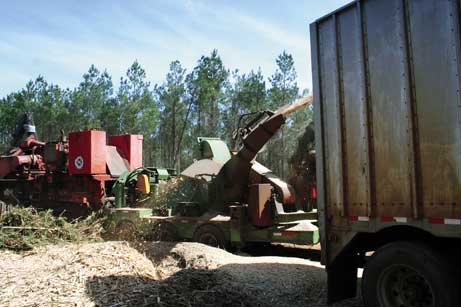Ezell Castleberry, 66, had already been logging for 30 years when he first started chipping in 1994. He did logging and chipping on separate crews for five years until securing his first contract to deliver biomass in 1999. Then he bid farewell to logging. “If we can’t hold it in our hands, we don’t haul it,” he says.

Today, Castleberry has two jobs: an in-woods chipping and biomass crew headed by son, Jeff, and a stationary biomass/chipping job working on the wet yard at the MeadWestvaco mill in Cottonton, headed by middle son, John. The woods crew hauls on average 100 loads of chips and 40 of biomass every week. The mill crew handles mostly bark for biomass.
Castleberry, doing business as Castleberry Logging Inc., believes biomass is the future of the logging industry, but he cautions against too many operators jumping on the bandwagon too quickly or recklessly. “There is not enough yet to go around for everyone,” he warns. He’s concerned some of his peers may attempt to emulate his success without calculating the cost, and consequently charge too little for their work, which will drive the price down for everyone. Mills, he says, “Will never tell you when they call you what they will pay you; they want to know what you will deliver it for.”
Unfortunately, because many loggers are reluctant to discuss business details with their perceived competition, some won’t know what the going rates are. He has no such qualms; he thinks the industry can benefit from loggers working together openly. When fellow southern Alabama logger Ricky Carnes was contacted last year about delivering biomass, he came to Castleberry for advice about what to charge. “They paid him exactly what I told him to ask for.”(more...)